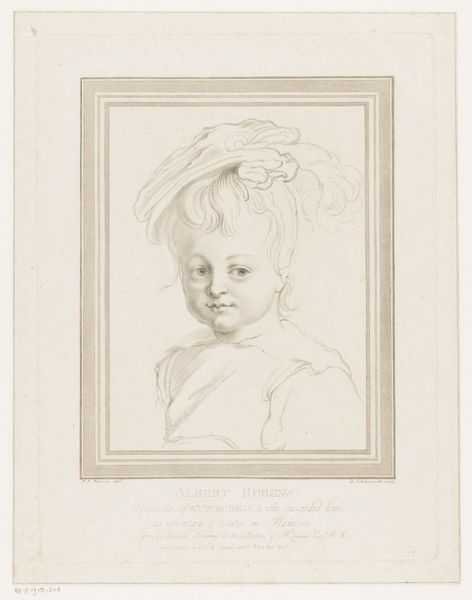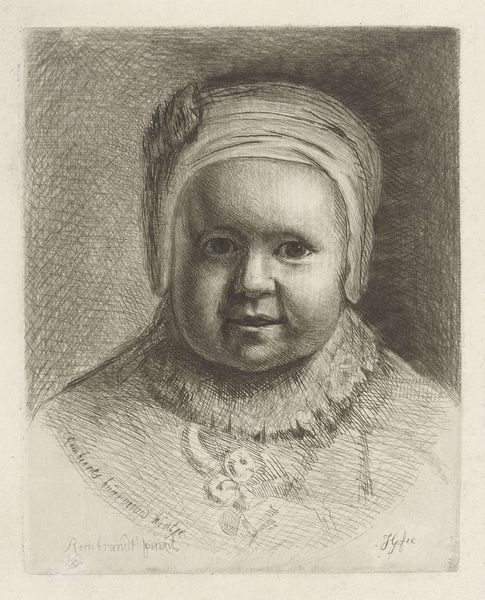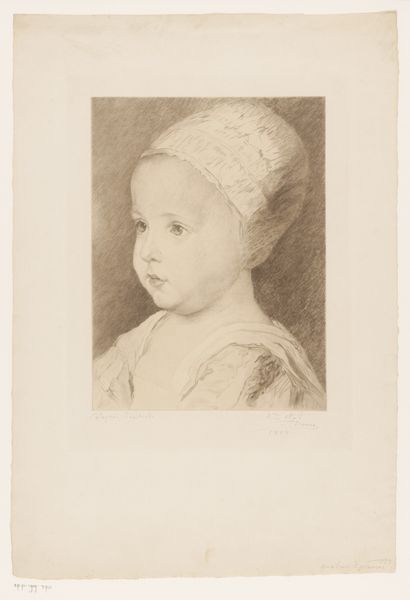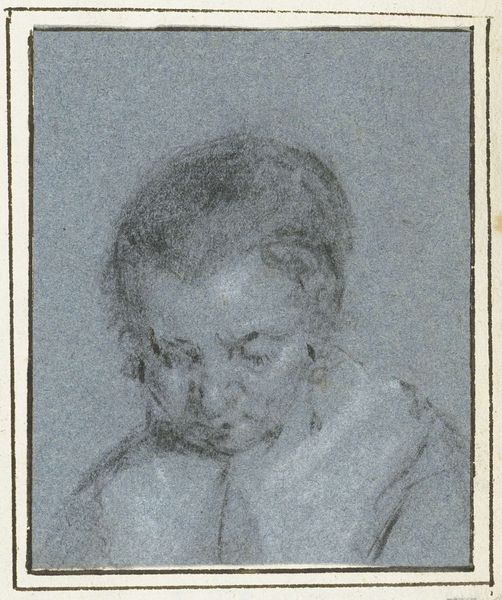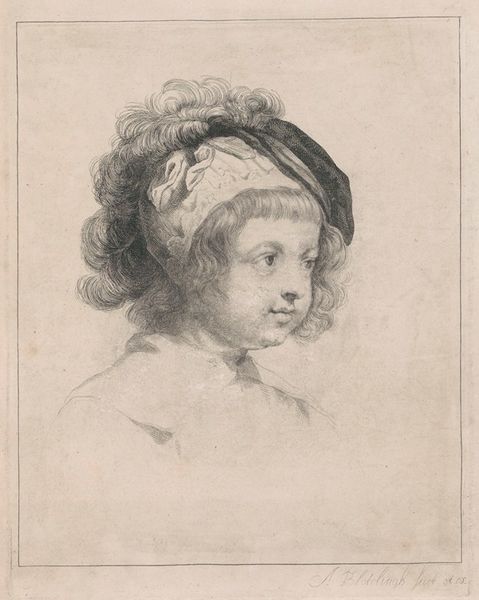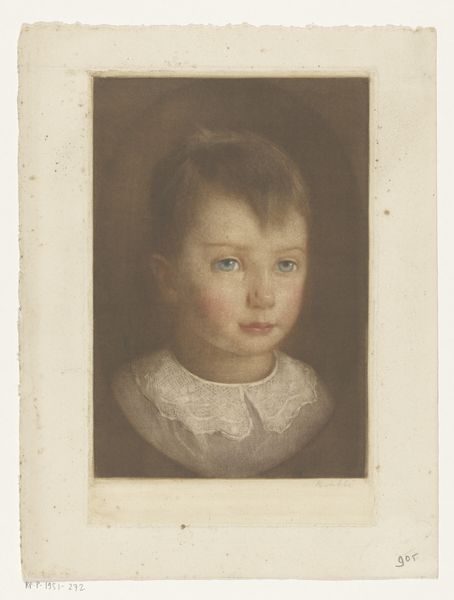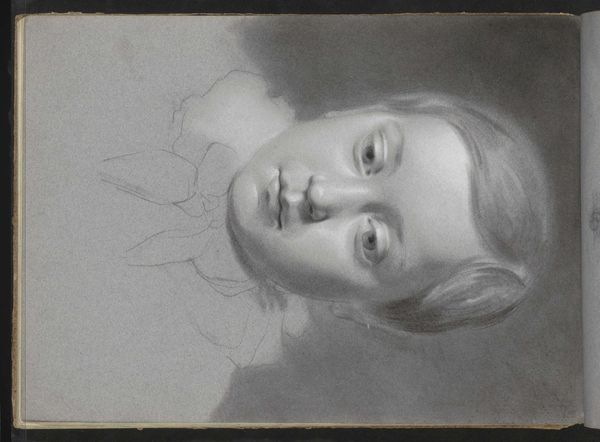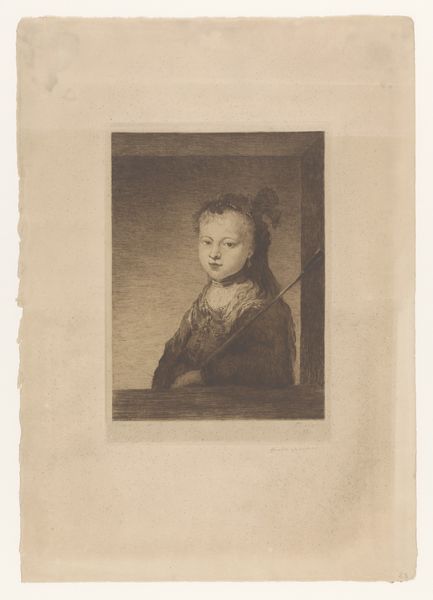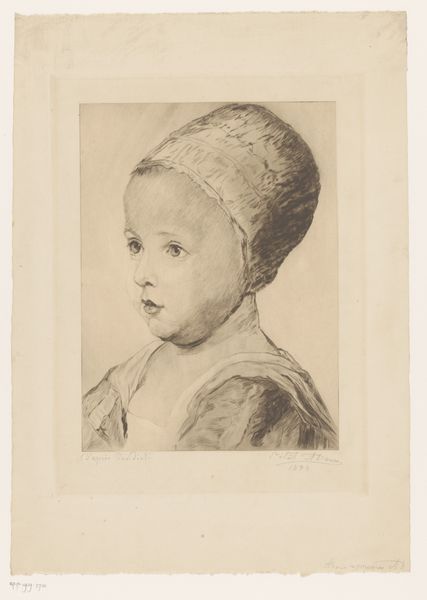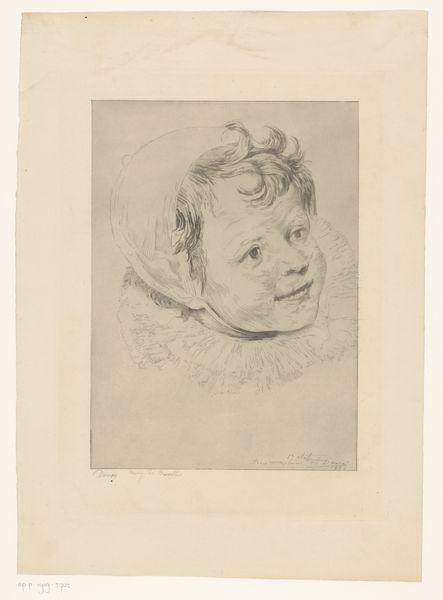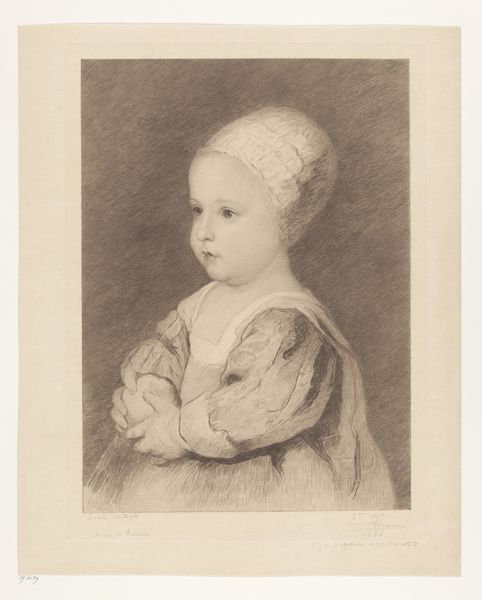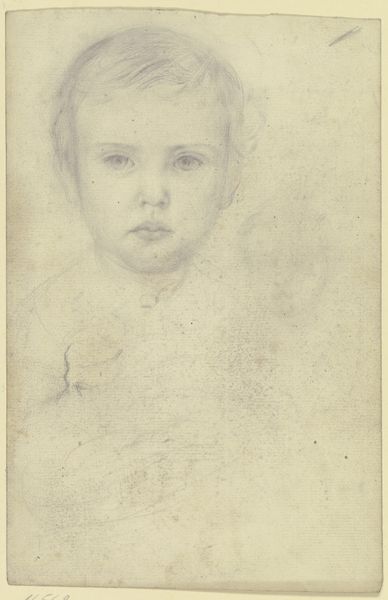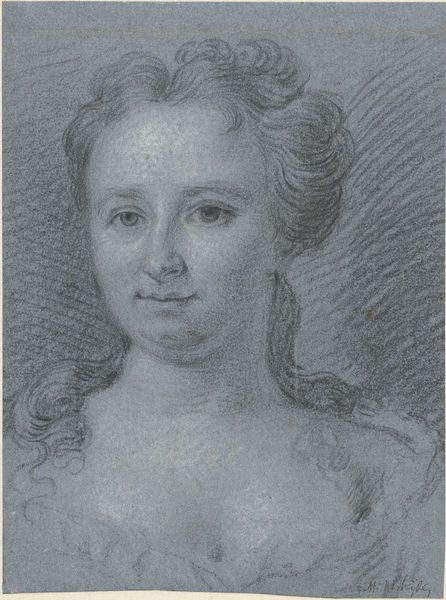
drawing, pencil
#
portrait
#
drawing
#
baroque
#
charcoal drawing
#
pencil drawing
#
pencil
#
portrait drawing
#
realism
Dimensions: height 287 mm, width 251 mm
Copyright: Rijks Museum: Open Domain
Editor: So, this is "Head of a Girl with a White Cap" by Mattheus Verheyden, done sometime between 1710 and 1777. It's a delicate drawing, probably charcoal or pencil, and there's something about the girl's gaze that's really striking. What do you see in this portrait? Curator: I see a carefully constructed image that evokes innocence, yet perhaps hints at a deeper psychological narrative. The white cap isn't just a fashion statement; it symbolizes purity, virtue, and perhaps even a certain social standing. These caps weren’t worn by everyone. Editor: So the cap is like a signifier? A way of understanding the girl's place in society? Curator: Precisely. And look at the softness of the lines, especially around her face. This adds to a feeling of fragility, almost as if the drawing itself could disappear. But contrast this with the directness of her gaze, which suggests awareness beyond her years. Think of the historical context - childhood portraits often served to project idealised images, encapsulating familial aspirations or memorializing a fleeting moment. Editor: That makes me wonder if this is less about the girl as an individual and more about what she represents. Curator: It’s both. The artist clearly wanted to capture a likeness, but also to imbue the image with meaning, constructing a visual narrative that resonated with societal values and expectations. How do you see the background affecting this? Editor: I see what you mean, it's pretty undifferentiated which makes her pop out, drawing your focus onto her face, as the most important part of the artwork. It seems every aspect is meticulously chosen. Curator: Indeed. Every element, from the soft lighting to the deliberate composition, works together to create a lasting impression of idealized, perhaps unattainable, beauty and virtue, charged with the symbols of cultural identity. Editor: That gives me a new way of considering portraits of that era - not just likenesses, but loaded with symbolism. Curator: Absolutely, art serves as a continuous visual dialogue through time, shaped by intentions, perceptions, and values.
Comments
No comments
Be the first to comment and join the conversation on the ultimate creative platform.
